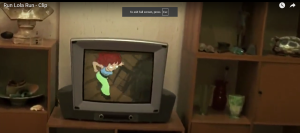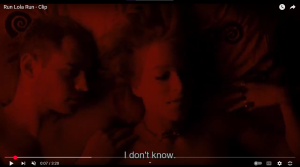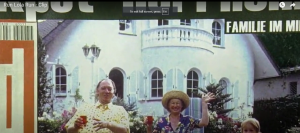Author: Victoria
‘joie de vivre’ – final video
‘hot pot’ video essay
‘growing up’ – AI cinema
blog post 4 – ‘time manipulation’
Time manipulation in digital cinema is critical in making the viewer feel the true action and pacing of a scene.
In ‘Shaun of the Dead’, director Edgar Wright creatively manipulates time to make viewers entertained while seeing the same scene several times. While Shaun is coming of with ‘The Plan’ for how they will survive the apocalypse, he amends it each time, while keeping the core plan the same. However, rather than completely skipping over showing the plan multiple times, Wright utilizes the same shots each time, sped up or slightly changed. This adds a great comedic effect to the scene and allows viewers to glimpse the quick montage multiple times, hopefully capturing different details in each pass.
This montage unfolds as a quick sequence of events, further highlighting that this is an imagined scenario rather than real life. This is aided by the vocal narration, which furthers the urgency felt and the similarities of each pass of the montage. Overall, it’s an extremely effective and fitting way to present a plan of future actions that not only keeps the viewer entertained, but it also adds to their experience despite seeing the same footage multiple times in a row.
(Best comedy trilogy!)
blog post 3 – ‘Autumn Mists’
The film begins with mostly still nature shots. This is slowly interspersed with shots of the woman as she reads a letter and has an emotional reaction. The juxtaposition of the emotional shots of the woman with the landscape shots draws the viewer deeper into her mind, as the mood of each scene carries from one to the next. The viewer can see that she is upset, and scenes with darker emotion such as the heavy rain push the feeling further. There is also a sense of death or loss, as the trees lose their leaves and stand barren. While the viewer can try to track a sense of movement or action through the piece, overall, the only focus is on the woman and her feelings compared to the nature around her.
‘Autumn Mists’ style of montage is very effective, as it conveys feelings without words in a way that facial expressions alone could not. Using the Kuleshov effect, the emotions and expressions that could be misunderstood are further defined through the non-human imagery. It evokes a feeling of sadness and heartbreak, but even further than that, it evokes a feeling of hopelessness and despondence. She almost seems to be in shock, although that could also be attributed to the style of acting at the time. However, the comparative shots of the woman to the nature around her are quite moving and will speak differently to each viewer.
‘montage loop’
‘infinite loop’
‘lunar new year’ – breaking space montage
‘oh lawd’ – making space
‘one day in 49 seconds’ video post
blog post 1 – ‘Run, Lola, Run’
In the film ‘Run, Lola, Run’, the director manipulates time through multiple techniques such as repetition with variations, shot length, and specific focus on moments in time. The use of these techniques allows time to be stretched, compressed, or entirely repeated without losing the viewer’s perception of the current timeline.
To create a cohesive timeline over the three sequences, the director utilizes repetition with slight variation to allow the viewers to truly understand that each sequence is the same period of time, changed through the actions of the protagonists. The repetition begins with very little variation, re-situating the viewer into the sequence with each new beginning.

Another technique the director uses to manipulate time is a variety in shot length to lessen or create tension and speed. When the action of the movie is high, the shots are quick, condensed, and dynamic, with the camera often following Lola personally as she runs. In the lulling moments of the movie, shots are longer and more still, with less movement and more dialogue. This effect keeps the viewer engaged without tiring them out, and allows heavy moments, such as their deaths, to sink in more effectively due to a less ‘alive’ motion of camera.

Finally, by choosing to focus almost entirely on the present moment as the action occurs, it eases confusion viewers may have about where they are in the timeline. The moments that aren’t in the present are shown in quick, flashing succession, allowing random characters to have full and fulfilled storylines in each timeline in a matter of seconds. Not only does this maintain the overall pace of the movie, it avoids distracting the viewer from Lola’s story and overall goal, which is the pushing point behind all action in the movie.
